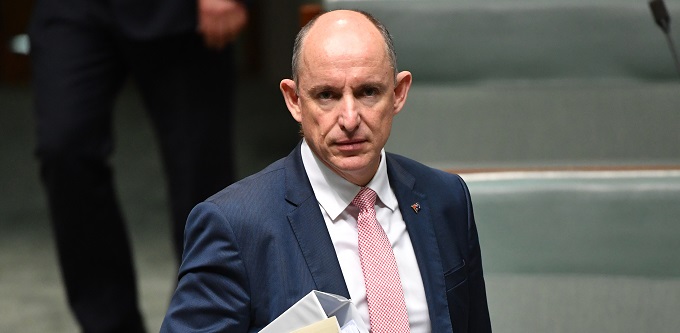
Minister for Employment, Workforce, Skills, Small and Family Business Stuart Robert, Source: AAP/Mick Tsikas.
The federal, state and territory governments have agreed to a suite of vocational education and training (VET) reforms that put industry leaders in the driving seat to tackle the skills gap, and could see available qualifications updated in a matter of months, instead of years.
The reforms are designed to give Aussies access to more relevant training, while also helping employers find the skilled workers they so desperately need.
The Morrison government is investing an additional $149.2 million into the new reforms over the next four year, bringing the total commitment to improving the VET system to $292.5 million.
“As Australia’s economy roars back we need a skills and training system that is well positioned to meet our evolving workforce needs into the future,” Minister for Employment, Workforce, Skills, Small and Family Business Stuart Robert said in a statement.
Here’s everything we know so far.
What’s changing?
The reforms change the approval processes for training packages.
The Australian Industry and Skills Committee (ASIC) will be replaced with a new ‘independent assurance’ function, intended to improve transparency, accountability and confidence in training products.
A so-called ‘industry clusters’ model will replace the existing Industry Reference Committees (IRCs) and Skills Service Organisations (SSOs).
IRCs currently serve as the formal channel for sharing industry skills requirements with ASIC, while SSOs are independent professional service organisations that support IRCs in developing and reviewing training packages.
Industry clusters will essentially be groups of representatives from aligned industries, who will identify and forecast workforce needs in their sectors and develop training products to meet those needs quickly.
This will include piloting and testing new training products and working with providers to ensure they’re suitable, as well as monitoring the impact of changes.
The 67 IRCs and six SSOs will reportedly be replaced by just nine industry clusters.
Other new mechanisms include an annual ‘health check’ to evaluate improvements.
What do VET reforms mean for small business?
According to the Department of Employment and Small and Family Business, the changes will mean courses are better aligned with the needs of each industry, as well as those of students.
Minister Robert also said they will see qualifications updated more quickly, ensuring prospective employees can upskill fast to meet demand.
An article from the Australian Financial Review suggests that under the current system it can take up to two-and-a-half years to update a qualification. That could now be reduced to just three months.
The new structure is also designed to give industry more of a role in shaping the VET system, to make sure it addresses skills gaps and workforce challenges in the most useful way.
Why are VET reforms happening now?
The department cites COVID-19 and the fast-changing nature of the way we work. All of this means employers’ needs are changing, and many are not satisfied with the current system.
In a survey, only 41% of employers said the current VET system is meeting the needs of their business, and 42% said they struggle to find job applicants with the right skills, qualifications or experience.
Overall employer satisfaction with the VET system fell from 86.3% in 2009 to 78.8% in 2019.
The changes are also announced as Australian businesses grapple with a skills shortage spanning industries from tech to hospitality.
When will the changes come into effect?
The new independent assurance function and industry clusters are expected to be fully operational from January 1, 2023.
Skills and training ministers from each state and territory have agreed to undertake a review of the new arrangements 12 months after the change is launched.
More information on how the transition will work is expected to be available soon on the Skills Reform website.



COMMENTS
SmartCompany is committed to hosting lively discussions. Help us keep the conversation useful, interesting and welcoming. We aim to publish comments quickly in the interest of promoting robust conversation, but we’re a small team and we deploy filters to protect against legal risk. Occasionally your comment may be held up while it is being reviewed, but we’re working as fast as we can to keep the conversation rolling.
The SmartCompany comment section is members-only content. Please subscribe to leave a comment.
The SmartCompany comment section is members-only content. Please login to leave a comment.